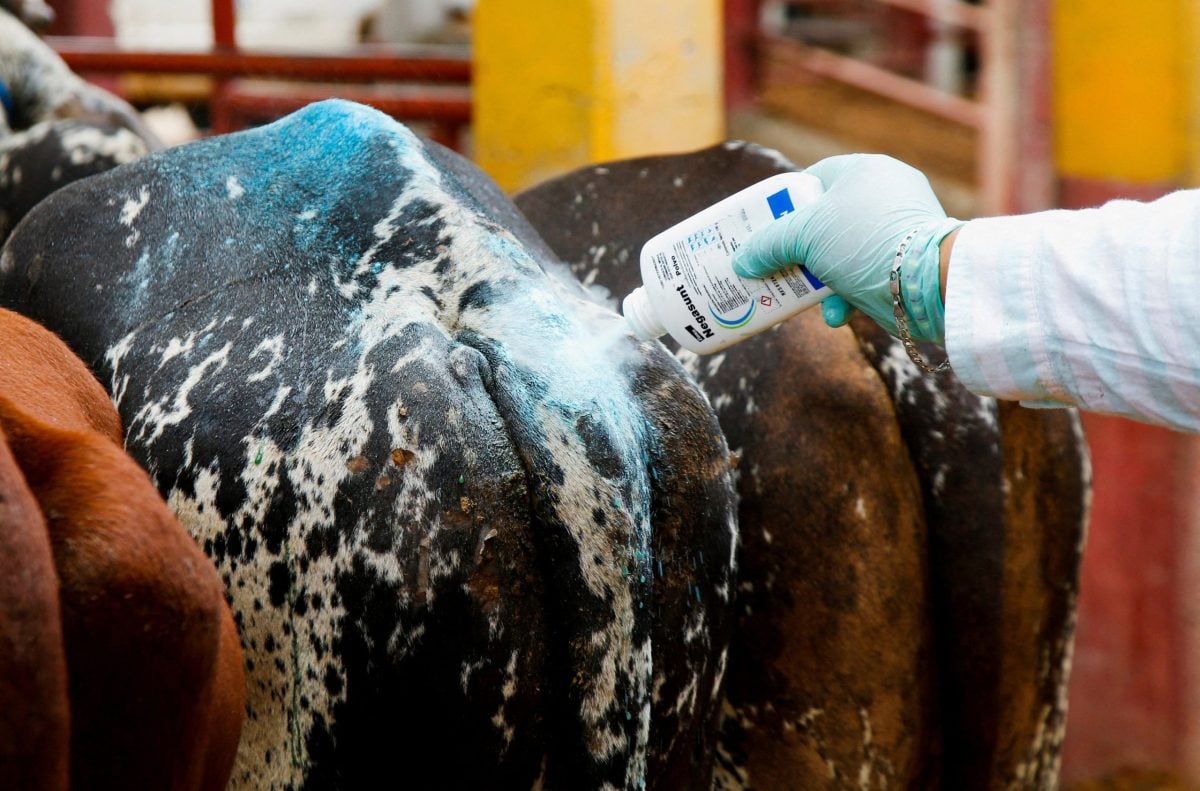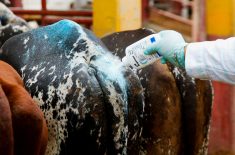The federal government has designated its first list of municipalities where breeding livestock producers will be eligible to defer some tax on 2007 income from drought-induced sales.
The tax deferral program, announced Friday, will apply to breeding livestock producers in areas of northwestern, southern and eastern Ontario and southern Saskatchewan, Alberta and British Columbia.
Designation of municipalities for tax deferrals is announced each year after federal reviews of forage yield, precipitation, soil moisture and water supply data for the season. In the case of consecutive years of drought designation, producers can defer sales income ahead to the first year in which the area is no longer designated.
Read Also

U.S. not ready to lift Mexican cattle ban over screwworm, Agriculture Secretary Rollins says
The U.S. is not yet ready to reopen its border to Mexican cattle amid an outbreak of the flesh-eating New World screwworm parasite, Agriculture Secretary Brooke Rollins said, but she is pleased with Mexico’s efforts to contain the pest.
Under the deferral, 30 per cent of income from net sales can be deferred if the breeding herd has been reduced by at least 15 per cent, but less than 30 per cent. Where the herd has been reduced by 30 per cent or more, 90 per cent of income from net sales can be deferred.
“Tax provisions offered by this program will allow farmers to restock their herds in the spring,” said Guy Lauzon, the parliamentary secretary for agriculture, in the press release announcing Ontario’s funding.
Eligible producers may request this deferral when filing their 2007 income tax returns.
In Ontario, the 2007 drought designation applies in several jurisdictions, including the cities of Hamilton, Kawartha Lakes and Toronto; the counties of Brant, Bruce, Dufferin, Elgin, Essex, Frontenac, Grey, Haldimand, Hastings, Huron, Lambton, Lennox and Addington, Middlesex, Northumberland, Norfolk, Oxford, Perth, Peterborough, Prince Edward, Leeds and Greenville, Simcoe and Wellington; the municipality of Chatham-Kent; the regional municipalities of Durham, Halton, Niagara, Peel, Waterloo and York; and the territorial districts of Algoma, Manitoulin and Thunder Bay.
Southern Saskatchewan rural municipalities designated for drought in 2007 include Happy Valley, Hart Butte, Poplar Valley, Val Marie, Lone Tree, Frontier, Bengough, Willow Bunch, Old Post, Waverley, Mankota, Glen McPherson, White Valley, Reno, Excel, Lake of the Rivers, Stonehenge, Wood River, Pinto Creek, Auvergne, Wise Creek, Grassy Creek, Arlington, Glen Bain, Whiska Creek, Lac Pelletier, Bone Creek, Carmichael, Piapot, Maple Creek, Lawtonia, Coulee, Swift Current, Webb, Gull Lake, Big Stick, Morse, Excelsior, Saskatchewan Landing, Riverside, Pittville and Miry Creek.
Designated southern Alberta municipalities include the municipal districts of Pincher Creek, Ranchland, Taber and Willow Creek; the municipality of Crowsnest Pass; and the counties of Cardston, Cypress, Warner, Forty Mile and Lethbridge.
Designated regional districts in B.C. include Central Kootenay, East Kootenay, Kootenay Boundary and Okanagan-Similkameen.










